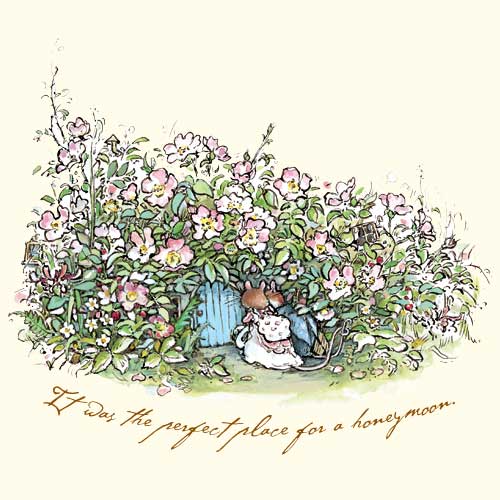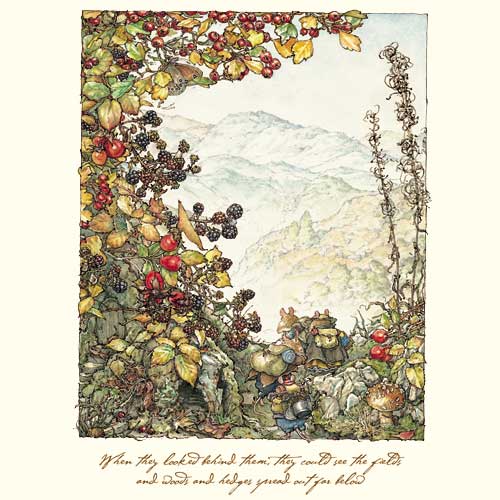HOW IT ALL BEGAN
SPRING STORY, SUMMER STORY, AUTUMN STORY and WINTER STORY chronicle in astonishing illustrative detail, the lives and adventures of a community of mice who live in Brambly Hedge. Brambly Hedge is an idyllic spot where old values flourish and seasonal self-sufficiency is the order of the day.
Intended for small children, the books were an immediate success with readers of all ages and the books have been translated in to over thirteen languages and sold over seven million copies.

This is the story of how Brambly Hedge went from a scrap of paper on a Tube Train in the late 1970s to a worldwide children’s classic…

At the age of thirteen, Jill suffered a detached retina; this would result in her no longer being able to take part in sport at school. Instead she would spend afternoons in the art room or leafing through books in the library. Jill found great pleasure in drawing flowers and twigs, a pleasure that would shape the years to come.
Jill chose to study illustration at St Martin’s School of Art in London. Jill stated that
“ I did not have a very clear idea of my future but assumed I would earn my living by illustrating other people’s books. I certainly never imagined that one day I would write my own.”
The London Underground would form a key role in the unintended development of Brambly Hedge in Jill’s mind. She travelled to art college on the Central Line from Epping, Jill would shut herself off and escape into an inner world, a hedge bank of mice. These moments of escapism from the subterranean bustle gradually became what we now know as Brambly Hedge.
All the food used in Brambly Hedge was created beforehand in Jill’s kitchen to make sure the ingredients worked. Many of the trees used to create Brambly Hedge are directly illustrated from trees that still stand in Epping Forest. Once all the research was complete, she would start to sketch out the images in pencil. It took Jill around two years to produce a book, with one large illustration taking up to three months.


This second phase of books saw Jill drawing inspiration from further afield than her roots in Epping Forest. The rocky crags of the central Lake District inspired The High Hills, while Sea Story took her to the north Norfolk coast and the Suffolk estuaries.
An extensive range of merchandise followed the success of the books. Royal Doulton figurines and tableware quickly became collectors’ items and are still sought after to this day. There have been painting books, stationary, cards, audio books and many more items to accompany the Brambly Hedge book series.
The Brambly Hedge books have now been translated to nineteen different langauges worldwide.
1996 saw Brambly Hedge move from the page to the screen. The television version of the first four seasons was created using stop frame animation and highly sophisticated puppets. The characters were brought to life with the voices of Robert Lindsay, Charlotte Coleman, June Whitfield, Neil Morrissey and Jim Broadbent. The BBC broadcast the first episode at 4.15pm on Christmas Day 1996 to an audience of over seven million people. The success of the first four productions were followed with adaptations of the latter four books. The series was subsequently released on VHS and DVD


Sadly Jill’s health continued to deteriorate as time went on, and on 15th November 2017, she passed away peacefully. She was just 66 years old.
In order to keep the books and ethos alive for many generations to come, Jill’s children, Lizzie and Pete, are now managing Brambly Hedge, and are looking forward to introducing the mice to the next generation.
The world has changed dramatically since the first publication of Brambly Hedge back in 1980, but the ethos of Brambly Hedge remains unchanged. Community spirit, seasonal cooking and sustainability are perhaps more relevant in today’s world than ever before.

